Kyodo News “Rural JET alumni” series: Nic Klar (Niigata)
News agency Kyodo News has recently been publishing monthly articles written by JET alumni who were appointed in rural areas of Japan, as part of promotion for the JET Programme. Below is the English version of the column from October 2013. Posted by Celine Castex (Chiba-ken, 2006-11), currently programme coordinator at CLAIR Tokyo.
********
Originally from Australia, Nicholas Klar (Niigata-ken, Itoigawa-shi, 1995-97) wrote the book “My Mother is a Tractor” about his life as an ALT in Omi, Itoigawa, Niigata-ken. After JET he worked for many years as a college counsellor and History teacher in international schools before returning to Japan to live. He now runs a small business in the Japan Alps, “Explore the Heart of Japan” as well as a popular travel website (http://myoko-nagano.com).
Remember that here all is enchantment, – that you have fallen under the spell of the dead, – that the lights and the colours and the voices must fade away at last into emptiness and silence. –Lafcadio Hearn
It was a stark winter’s day as usual in Niigata-ken, grey like sodden blanket. Not one that I had set out on seeking ghosts, but it suited the mood. As I changed trains in Naoetsu for Ōmi the old tempura stand I had been hoping for a snack at was still there, but today it was closed. It seems even the sturdy yukiguni could not stand the sort of weather that was being hurled at them this winter from across the Japan Sea. I settled into my seat, its soft orange covers familiar like an old friend, and waited for the delayed departure. I scrubbed the mist from the brown streaked windows with my hand as the motor idled and the minutes slipped by. Outside schoolboys in their traditional Prussian kit seem oblivious to the biting gusts of artic-like snow. Eventually with the sound of the station attendants whistle the doors snapped shut and the blue and white carriage groaned away from the platform.
As we crossed over the dark frigid waters of the Himegawa almost an hour later I grew excited. I hadn’t been back to the haunts of my old town for years. It was an unplanned visit and no-one really knew I was coming. I looked over for the local chugakko as the train passed by, obscured now by the construction of the new Hokuriku shinkansen. Framed behind those were the mountains I had loved so much. So many times I had taken my bike up into those North Alps making new discoveries, getting lost in the awesome beauty of its nature. Days of sunshine, days of rain. How I missed them. And the ghosts that inhabited them.
To the right there was a slight glimpse of my former apartment block. Not mine anymore, not for many years. In fact I think it now lays empty, apart from maybe a ghost or two, as the town depopulates. Tall, grey, forbidding – once referred to by a friend as, “…classic 1950’s communist Romanian style architecture”. The memory of that remark brought a brief smile to my face. Yet, it is the only place I will ever live in that has a sea view at the front and the mountains at the back. Grand views of God’s great vista on tap.
When the doors clunked open at Ōmi eki it was if nothing had changed. The chimes rang the same they had all those years ago and the black asphalt platform lay several centimetres thick with windswept snow. It felt soft under my feet as I began my ascent up the cold cement stairs. Standing in his post was my first metaphorical ghost – Watanabe-san the station master in the same blue-clad uniform, looking not a whit older than when we had last met a few years ago. He didn’t recognise me of course, even though I had taught his daughter at Ōmi chugakko. During my stay many of the station attendants had greeted me by name each time I passed through the gate. The inside of the station was a time capsule still painted the same green, apart from a more modern poster here and there, populated by even more ghosts of my memories. Local oba-chan in the waiting room still sat chatting on wooden bench seats around the kerosene heater behind glass doors. The three old shuttered-up ticket windows still existed – a sad reminder from the more grandiose boom days of Ōmi. Perhaps they were stubbornly retained in the forlorn hope that those times may yet return once again. Read More
CLAIR Magazine “JET Plaza” series: Anthony Bianchi (Aichi)
Each month, current and former JET participants are featured in the “JET Plaza” section of the CLAIR Forum magazine. The November 2013 edition includes an article by JET alumn Anthony Bianchi. Posted by Celine Castex (Chiba-ken, 2006-11), currently programme coordinator at CLAIR Tokyo.
********
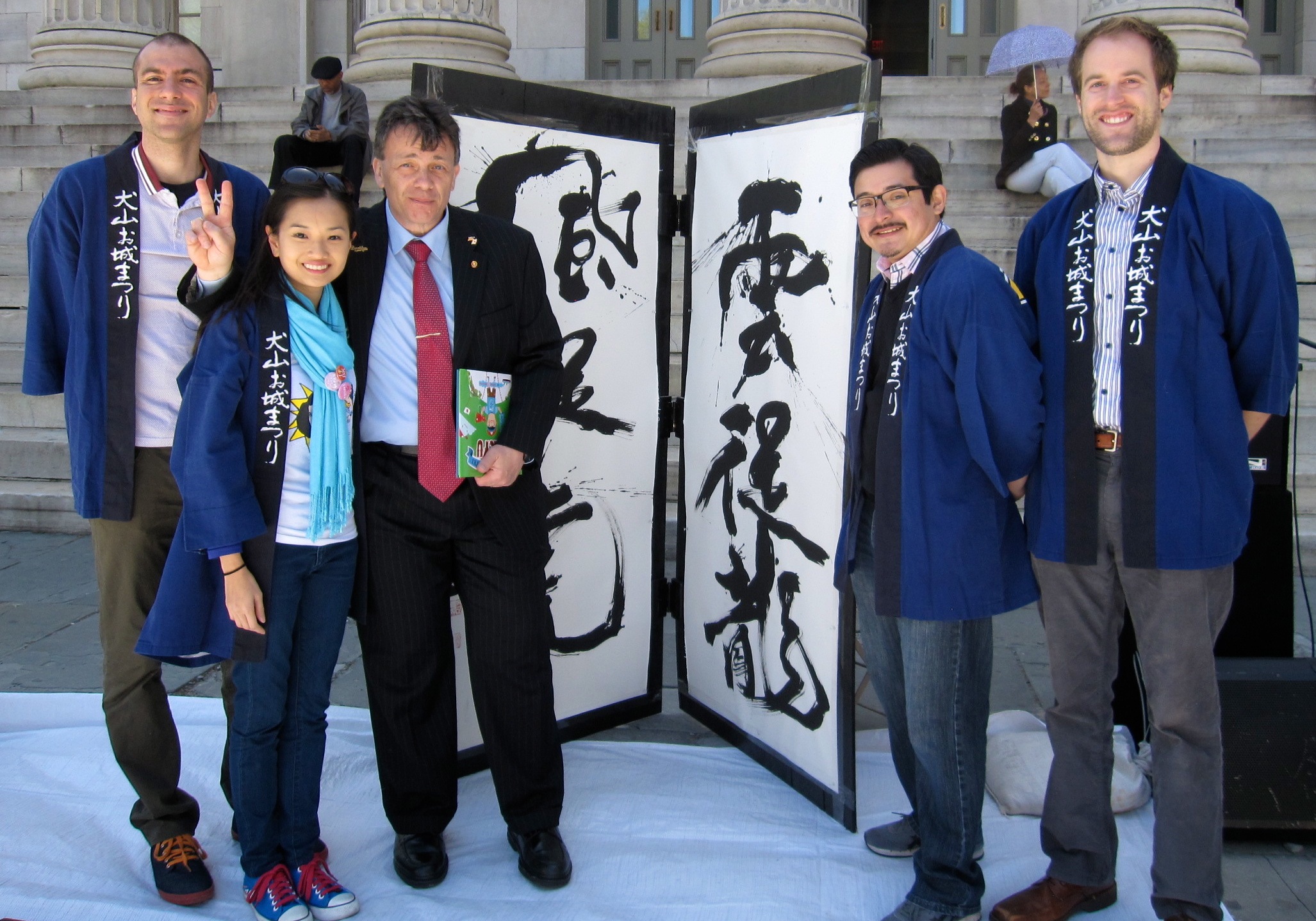
“Once you are in the programme, you are in the programme for life. As an Italian kid from the streets of Brooklyn, I get that. Like they say, when you’re a JET you’re a JET all the way, from your first cup of tea to your last hanami.”
A native of Brooklyn, New York, Anthony Bianchi (Aichi-ken, Kiyosu City, 1989-91), graduated from New York University with a degree in film making. After working on a number of television programs in Hollywood, he joined the JET Programme and spent two years working as an ALT in rural Aichi. A few years later, after overcoming many difficulties, he started the Native English Teacher (NET) Program, a teachers programme tailored for Inuyama City. Feeling there was a wall between the citizens and the city hall, he decided to run for the office and was voted into the city council of Inuyama City, Aichi Prefecture in April 2003. Anthony is currently serving his third term.
JET Generations
As anyone who has done so knows, living and working overseas in a different culture has a profound effect on all sides.
I have written before about how being on the JET Programme changed my life. To make a long story short, I would definitely not be here in Inuyama doing what I am doing had I not been involved in JET. Sometimes it still amazes me how things worked out. I mean, sometimes while I am making an argument on the council floor about some very local issue I still think, “How in the world did I end up here?” Conversely, I wonder at times what I would be doing if I had not joined JET some 25 years ago. Definitely something very different and most likely not as rewarding.
But the JET experience is certainly not only about what you get out of it, as I mentioned at the top, it is about the effect it has on all sides. As time passes I realize more and more that being a JET alumnus is a living thing that goes on after your contractual duties end. I still meet people involved with the programme that leads to great relationships and opportunities. Especially opportunities to give others even a small glimpse into another culture like the one we had by being part of the JET Programme. I am always impressed by the willingness of JET alumni to give back. A couple of summers ago I was asked to be on a panel at a national conference in Washington DC. Of course, there again, I met many outstanding alumni who are doing great things to promote cultural exchange and understanding between Japan and their home country. But I also realized that there is something about meeting former JET participants that has a camaraderie that is different and,in many ways, surpasses any other alumni association that I have known. I include in this group also Japanese staff and officials who have worked on the programme.
I would like to talk about a recent example. Out of my office, we run an exchange program called B. Bridges. We are a volunteer exchange group in our tenth year of existence. The idea for the group was seeded at an event the Brooklyn Borough President,Marty Markowitz, held for me at Borough Hall after my first election in 2003. There I was reacquainted with the administration of Xaverian High School. On that same trip I visited the school before returning to Japan. During that visit we decided to hold some kind of exchange.
JQ Magazine: JETAA USA Earthquake Relief Fund Aids Recovery

Taylor Anderson Memorial Fund founder Andy Anderson (center) with members of the JET Alumni Association of New York at Columbia University, Oct. 30, 2013. (Courtesy of JETAA New York)
By C-M Daeley (Saga-ken, 2008-2011) for JQ magazine. C-M is a poet, rap lyricist, and travel enthusiast currently working as an English teacher in Tokyo. For a look at some of his other writing, poetry and lyrics, check out his blog at http://spikedaeley.wordpress.com.
With today’s 24-hour global news cycle, it is sometimes difficult to keep even the most severe events in public memory. The Great East Japan Earthquake that struck on March 11, 2011 has not received much recent coverage in global news, but the issues faced by those still rebuilding remain monumental. Fortunately, there has been significant international aid from a number of sources, one of which is the JETAA USA Earthquake Relief Fund. This grant has raised almost USD $90,000 and has been used to provide seed funding to assist grassroots programs in areas severely impacted by the earthquake.
Due to the complex nature of fund allocation, this article will focus mainly on projects and programs directly supported through JETAA funds. However, it is significant to note that the Earthquake Relief Fund was only one of several avenues used to bring aid to the region and that, to date, roughly $500,000 has been raised through JET-affiliated groups and organizations worldwide. Jim Gannon (Ehime-Ken, 1992-94), current executive director at the Japan Center for International Exchange in New York, and Jessyca Livingston (Hokkaido, 2003-06), one of the three JETAA USA Country Representatives serving during the immediate aftermath and current JET Program coordinator at the Consulate-General of Japan in Denver, spoke about some of the initiatives the Earthquake Relief Fund has helped support.
“It is very difficult to give a concise yet comprehensive picture of what the JETAA funds have done,” Gannon explained. “The best way to describe it is that they have played a catalytic role in supporting some key projects in the early stage that have been supported by a range of others in more generous fashion once they proved their merits. JETAA cannot take full credit for all of the successes, but it did play an important role in getting things moving.” He also noted, “The real heroes are these incredible people from Tohoku who have championed these projects, the inspirational young people who have relocated to Tohoku to help operate them, and those who have been shuttling back and forth from Tokyo and elsewhere to help formulate and drive these initiatives.”
After a national discussion and several rounds of voting in each of JETAA USA’s 19 chapters, a final decision was made about how the fund should be allocated. “In the end, it was very obvious that chapters found it important to support education-related efforts in those areas most affected,” Livingston said.
CLAIR Magazine “JET Plaza” series: Suzanne McMillan (Ehime)
Each month, current and former JET participants are featured in the “JET Plaza” section of the CLAIR Forum magazine. The October 2013 edition includes an article by JET alumn Suzanne McMillan. Posted by Celine Castex (Chiba-ken, 2006-11), currently programme coordinator at CLAIR Tokyo.
********

“Working in the media and recruitment space requires a high level of networking ability and the confidence to quickly reach out and engage with new people. My time spent in Japan provided me with this skill set along with resilience and the ability to adapt quickly to changing circumstances.”
Originally from Northern Ireland, Suzanne McMillan (Ehime-ken, 1998-2001) holds an MA in History from Aberdeen University in Scotland. Her media career began in the UK when she joined the BBC initially as Researcher and later as an Assistant Producer. She has held the positions of Chairperson within the JETAA NI Chapter and NI Country Representative within JETAA International. Suzanne is currently a Project Manager and BDM Executive at Webpublication in Sydney, Australia where she coordinates digital publishing projects.
The Time of my Life
Nervously twiddling my thumbs, I sat before the interview panel and hoped that my answers would bring me a step closer to my long awaited place on the JET Programme. What had brought me to this point in my life? Well, as a child a favorite uncle had told me many tales of his exotic life in Japan and passed onto me the gift of a hand towel imprinted with a map of Shikoku. This tattered piece of history proudly hung on the wall of my university dorm room and later traveled with me on my flight to Tokyo Orientation; beginning my new life in Japan.
For the next three years, life as an ALT provided so many memorable experiences. I shared stories with teachers, students and fellow JET participants; discussing UK sports, changing political events in Northern Ireland and the different approaches to education and family life. Local neighbors became my friends and my knowledge of Japanese history grew with any tale they would tell of their past. The world seemed a smaller place and I realized the impact of JET; cultural exchange that reaches a deeper level and enables lifelong friendships that are priceless.
Even now memories of JET spring to mind during everyday tasks; the particularly cold winter when the supervisor at my BOE bought all JET participants a puffer jacket to keep warm, ensuring that we could all be spotted at a distance of 100 meters waddling with the extra bulk. Warmth feels my heart when I recall the kindly teacher who delivered boxes of mandarin oranges to your front door if you happened to be sick. I have never been able to hold a mandarin since without seeing his caring face. And yes, I hold myself fully responsible for many Japanese adults who I taught when they were kindergarten age and who now having an Irish lilt to their accent after repeating key English words after me several times over. Read More
Life After JET: It’s Hip to be Square
Recently posted on JETAA NSW site by Eden Law (Fukushima-ken, 2010-11):
The JET Programme has lead to many opportunities and careers, sometimes rather unexpectedly. Our Life After JET articles by former JETs gives an insight about their lives after the programme, and how it has shaped their careers and paths. We hope that it will prove useful as an insight for potential applicants into what we as ex-JETs got from our experience, and maybe provide some nostalgic memories for others. Please feel free to contact us if you want to write about your own experience!
Kenneth Pinyopusarerk, who hails from Canberra, Australia, was a 2003-2006 CIR who worked in Saigawa (now Miyako), Fukuoka-ken. A man with a lifelong passion for two things: Japanese culture and computer games, he managed to combine the both and land a dream job at Square Enix in Tokyo where he currently works today. The only downside to his job is having to turn down countless requests from friends for “A Realm Reborn”, the latest in the Final Fantasy franchise.
Twenty years ago, on a crisp Sunday morning in Canberra, I had a life-changing encounter. I was strolling through the local Trash & Treasure when I stumbled upon a pre-loved cartridge of Final Fantasy II*, lying upon a splintery foldout table. Drawn by some unknown force, I paid the $40 asking price—a small fortune for a 14-year-old in 1994—without so much as an attempt to haggle. Thus began my enduring love affair with the video game developer Squaresoft, now known as Square Enix. Had my pimply teenage self been told that he would one day work for this company, he would have scoffed and promptly resumed playing whatever game it was he was obsessed with at the time.
Since childhood, I’ve had an affinity with Japanese culture. I attribute this to Read More
Kyodo News “Rural JET alumni” series: Daneeta Loretta Jackson (Fukuoka)

“My JET programme experience and my seven years in Japan have had a profound influence on me. It changed me into a more peaceful, communal person.”
News agency Kyodo News has recently been publishing monthly articles written by JET alumni who were appointed in rural areas of Japan, as part of promotion for the JET Programme. Below is the English version of the column from September 2013. Posted by Celine Castex (Chiba-ken, 2006-11), currently programme coordinator at CLAIR Tokyo.
********
Daneeta Loretta Jackson (Fukuoka-ken, Buzen-shi, 1993-95) was born and raised in the backwaters of Southeast Louisiana. She was educated at public school where she discovered her love for storytelling. She holds a B.A. in English from Loyola University of the South, an M.A. in English from George Mason University, and an M.A. in the Art and Technique of Filmmaking from the London Film School. Her hobbies are international travel, watching movies, anything having to do with dogs, and sleeping. She works as a writer and filmmaker and is a Creative Producer at the ElekTrik Zoo, an arts partnership she co-founded with her husband, Patrick Jackson. She joined the JET programme in 1993 because she wanted adventure. It had a profound affect on her and changed the course of her life.
I was a JET Programme participant from 1993 to 1995 in Buzen-shi, Fukuoka-ken. I never expected to go to Japan. I never dreamed about it when I was a child like so many of my counterparts did. I don’t mean to sound flippant, but the JET Programme for me was a kind of accident. It is too long of a story to recount here. In short, my husband applied for the both of us. He requested a rural post in Fukuoka-ken because a boy from his Japanese baseball team in California was from Fukuoka. When he got word we had been accepted, he told me we were going to Japan. I had about two months to prepare.
Before I knew it, I was on a plane to Tokyo in July of 1993. The first few days were a whirlwind. The orientation in Tokyo and the jet lag made it seem like I was in some sort of dream. I had no idea what awaited me in the countryside, I couldn’t speak much Japanese, and everything seems so strange… so different from my native Louisiana. Read More
Update 09.30.13: “Live Your Dream: The Taylor Anderson Story”
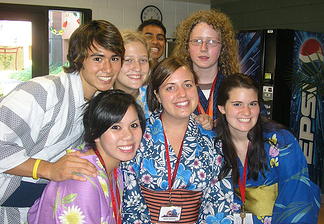 Thanks to Taylor’s father Andy Anderson for sharing the below update:
Thanks to Taylor’s father Andy Anderson for sharing the below update:
Toho-Towa Company, LTD (Godzilla, etc.) is promoting Taylor’s film throughout Japan with City halls, other NPO’s, Boards of Education, JETs, etc. JETs are good candidates to organize screenings as part of their community relations work. Towa has posted information about this at www.youtube.com/watch?v=cjUvhwX-jDQ.
Part of the proceeds from screenings will go to the Taylor Anderson Memorial Fund which is being set up as a Japanese NPO. Ambassador Fujisaki has agreed to be on the board and is helping us recruit other board members. We’re working on a new website for the fund as well. Towa would also like to have someone (such as JETs, former JETs, those associated with Taylor’s fund) speak at each screening.
Towa will launch this effort at the Yamagata film festival on 10/12/2013 www.yidff.jp/2013/program/13p7-e.html (Regge and some Taylor fund people will be there) and in Tokyo October 15th for potential screening hosts. Screening dates will start to be known about that time and we’ll keep them updated on www.thetaylorandersonstory.com and www.facebook.com/LiveYourDreamTheTaylorAndersonStory.
Percival Constantine at the Japan Writers Conference
Percival Constantine (Kagoshima 2008-2013) is a writer for GaijinPot and the Pulp Ark Award nominated author of several New Pulp novellas, including “The Myth Hunter” and “Love & Bullets.” He is also an editor at Pro Se Productions and resides in Kagoshima. At the Japan Writers Conference this year, he’s going to give a presentation titled “Self-Publishing: The Pros and Cons of Bypassing Traditional Publishing.” Here’s the official description.
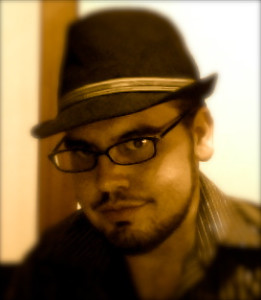 With the advent of new technology such as print-on-demand services and ebooks, the market has opened for authors who wish to go it alone and publish their books without the use of an agent or publisher. There are both positives and negatives to this approach.
With the advent of new technology such as print-on-demand services and ebooks, the market has opened for authors who wish to go it alone and publish their books without the use of an agent or publisher. There are both positives and negatives to this approach.
In the past, if one wished to publish a book, it required finding an agent and the agent locating a publisher for the product. Thanks to print-on-demand and ebook publishing, self-publishing has become easier than ever for aspiring authors. There are both positive and negative aspects to this. On the plus side, there is no need to write a number of query letters and send out submissions to agents or for the long wait before a book ends up on the market, as well as an increased share of the royalties. On the downside, the self-published author is responsible for all aspects of the production process, from editing the manuscript, laying out the book, creating a cover, and promotion. And though there is a larger share of royalties, the amount of copies sold can be far fewer. This presentation will examine the pros and cons of self-publishing.
To learn more about the Nov. 2-3 Japan Writers Conference, visit the official website HERE.
To learn more about Percival, visit his site HERE.
Book: “This Japanese Life” published by JET alum blogger Eryk Salvaggio
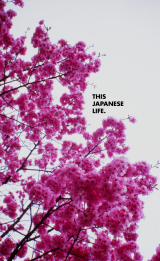 Thanks to AJET Chair Kay Makishi for the heads up on Fukuoka JET alum Eryk Salvaggio who writes the blog “This Japanese Life” and recently published a book by the same name. You can read more about Eryk in this Japan Times interview with him from 2012.
Thanks to AJET Chair Kay Makishi for the heads up on Fukuoka JET alum Eryk Salvaggio who writes the blog “This Japanese Life” and recently published a book by the same name. You can read more about Eryk in this Japan Times interview with him from 2012.
About the book: http://thisjapaneselife.org/this-japanese-life-the-book/
Most books about Japan can tell you how to use chopsticks or say “konnichiwa.” Few tackle the real stress of life in a radically different culture.
The author, a three-year resident and the writer and researcher behind one of the best Japan blogs, tackles the thousand tiny uncertainties of life abroad with honesty and wit.
Perfect for anyone about to leave home for Japan or elsewhere, This Japanese Life will deepen any reader’s understanding of Japanese culture as it’s fused into a method of dealing with the hardships of working and living there.
About Eryk:
Eryk Salvaggio was an American newspaper editor in Bangor, Maine before teaching English in Japan with the JET Program. He lived in Fukuoka City from 2010-2013, writing a blog, This Japanese Life, about Japanese culture and the tiny anxieties of being an expatriate.
The site was named one of the best Japan Blogs by Tofugu and was spotlighted by The Japan Times. Salvaggio has written for McSweeney’s, The Japan Times, Tofugu and Kulturaustausch.
His work as a visual artist has been covered in The New York Times and elsewhere.
He currently lives in London.
JET alum publishes new book on corporal punishment and discipline in Japan’s schools
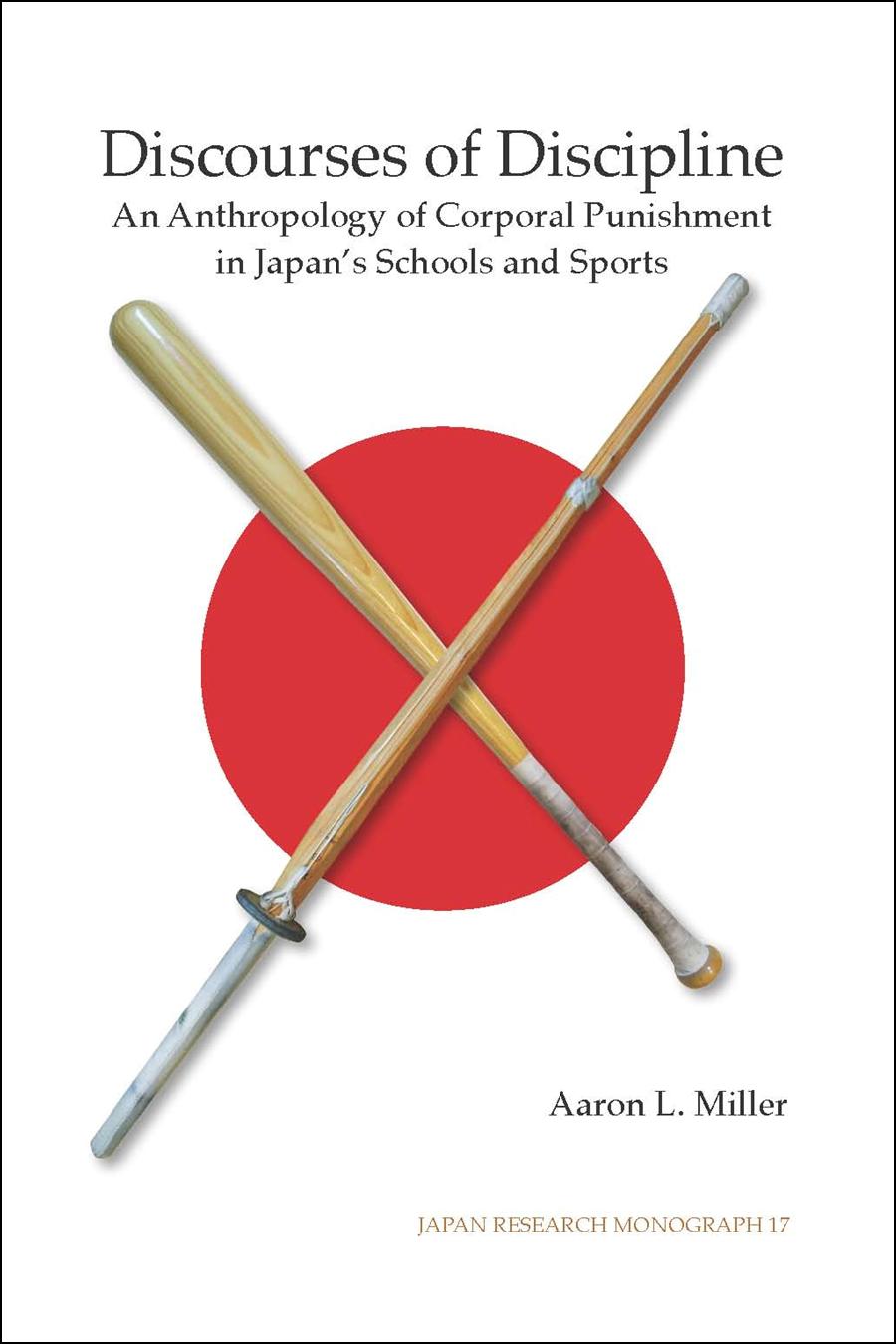 Thanks to AJET Chair Kay Makishi for passing along info about this interesting new book by Aaron Miller (Ehime-ken, 2002-04).
Thanks to AJET Chair Kay Makishi for passing along info about this interesting new book by Aaron Miller (Ehime-ken, 2002-04).
About the Author (via Amazon.com):
Aaron L. Miller, PhD is Assistant Professor and Hakubi Scholar at Kyoto University, affiliated with the Graduate School of Education, and Visiting Scholar, Stanford University Center on Adolescence. His academic research explores the relationships between education, sports, discipline and culture. His website is www.aaronlmiller.com.
About the Book:
This book is about the many “discourses of discipline” that encircle the issue of “corporal punishment” (taibatsu). These discourses encompass the ways that people discuss discipline and the patterns of rhetoric of what discipline should be, as well as what discipline signifies. By scrutinizing these discourses of discipline, this work disentangles the allegedly intimate ties between culture, discipline, and pedagogy in Japanese schools and sports.
For more information on this monograph, including how to order it,please visit http://ieas.berkeley.edu/publications/jrm17.html
Full IEAS catalogue: http://ieas.berkeley.edu/publications/catalogue.html
Amazon: http://www.amazon.com/Discourses-Discipline-Anthropology-Punishment-Monograph/dp/1557291055
Reviews (via Amazon)
Corporal punishment of children by teachers and coaches is a widespread practice in many countries, but especially in Japan, where it has become a front-page issue involving Olympic athletes. Miller explores this issue both historically and in contemporary practices and analyzes how various discourses regrading disciplinary actions have shaped Japanese understandings of their ‘educational reality.’ To understand this phenomenon, Miller rejects Ruth Benedict’s culturalist theory and, instead, places physical discipline (taibatsu) in the contect of Michel Foucault’s theory of violence and power, offering an incisive analysis of a complex issue. —Harumi Befu, professor emeritus, Stanford University
An intriguing and well-written analysis on molding character in Japanese schools and sports through the widespread use of corporal punishment. Miller frames his discussion in the contexts of Japanese cultural ideals about discipline, toughness, and self-improvement, as well as in Japanese perceptions of such forms of discipline as something uniquely Japanese. This book is an important contribution to understanding the social and cultural dynamics of core institutions in contemporary Japan. —Theodore C. Bestor, Harvard University
Corporal punishment as a discipline of pain and an abuse of adult authority is a troubling presence in Japanese classrooms and sports fields. This is an insightful and wide-ranging analysis that overturns simple judgments with a nuanced exploration of the historical development, sociocultural locations, and heated national discourse on corporal punishment in modern Japan. It is a significant contribution to our understanding of Japanese education and sports, and it is an original anthropological perspective on how we might theorize power in Japanese society. – —William W. Kelly, Yale University
Life After JET: Food for Thought by James Foley
Recently posted to the JETAA Oceania Facebook group by Eden Law:
The JET Programme has lead to many opportunities and careers, sometimes rather unexpectedly. This is part of a series of articles by former JETs about their lives after participating on the programme, and how it has shaped their careers and paths. We hope that it will prove useful as an insight for potential applicants into what we as ex-JETs got from our experience, and maybe provide some nostalgic memories for others. Please feel free to contact us if you want to write about your own experience!
Our next article in our Life After JET series comes from James A. Foley. A former Iwaki-shi, Fukushima-ken JET (2007-2010), James met his wife (who was also a JET) on the JET Programme and has successfully carved out a career as a reviewer and critic of New York’s Japanese food scene for the famous Village Voice publication. James is also quite handy with the camera, and his blog contains his writing, articles and photography. A little known fact is that he’s totally metal on the shamisen.
This August marks the third year since I finished my time on JET; I have officially been gone from Japan for as long as I was there. Looking back now over my time on JET, the connections between the Japan experience and my work as a professional journalist are abundantly clear.
Prior to packing up life and moving from the middle of America to Iwaki City on the coast of Fukushima, I worked as a news reporter for a daily newspaper in suburban Kansas City, Mo. While I was in Japan I continued to write and hone my journalism skills, but mainly just for a blog I kept for my own records.
Towards the end of my JET tenure I had no life plan or job prospects. Read More
Benjamin Martin at the Japan Writers Conference
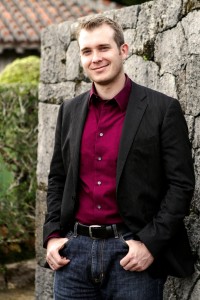 Benjamin Martin (Okinawa, 2008-13), author of the award-winning YA fantasy series Samurai Awakening (Tuttle) and blogger at MoreThingsJapanese.com, will be among the presenters at the 2013 Japan Writers Conference to be held Nov. 2-3 in Okinawa. Here’s the official description of his presentation, titled “Getting Published When You Live On An Island”:
Benjamin Martin (Okinawa, 2008-13), author of the award-winning YA fantasy series Samurai Awakening (Tuttle) and blogger at MoreThingsJapanese.com, will be among the presenters at the 2013 Japan Writers Conference to be held Nov. 2-3 in Okinawa. Here’s the official description of his presentation, titled “Getting Published When You Live On An Island”:
This will be an overview of my experience getting published while living on an island with a total population of 550 people, and what I learned along the way that will help perspective authors and those still finding their way while living in Japan.
I will outline my journey into the publishing world while living on Kitadaito and Kumejima Islands in Okinawa, including the successes and pitfalls I found along the way. I will talk about the processes I used to write, the friends and resources that helped me refine my work, and things I wish I had known back then. I will touch on the predatory tactics of companies and resources for avoiding them, and also on the benefits of contests such as the ABNA. I will delve into my experience working without an agent, the pros and cons, and the opportunity I found with Tuttle Publishing, the benefits and trials of working with a smaller press. Finally, I’ll cover marketing from Japan, with ways I found to connect with the writing community. I will end with time for questions and/or discussion.
For details on the Japan Writers Conference, visit http://www.japanwritersconference.org/
To learn more about Benjamin, visit http://samuraiawakening.com/author/
CLAIR Magazine “JET Plaza” series: Ari Kaplan (Hyōgo)
Each month, current and former JET participants are featured in the “JET Plaza” section of the CLAIR Forum magazine. The September 2013 edition includes an article by JET alumn Ari Kaplan. Posted by Celine Castex (Chiba-ken, 2006-11), currently programme coordinator at CLAIR Tokyo.
*******

“I still remember the ceremony […] held for departing JET participants when I left my position as an ALT. […] I distinctly recall advising the audience members that I was leaving so that I could return someday.”
Originally from the US, Ari Kaplan (Hyogo-ken, Suzurandai, 1993-94) came to Japan upon graduating from Boston University. He is now a business consultant in New York City and the author of Reinventing Professional Services: Building Your Business in the Digital Market Place (Wiley, 2011), which Akishobo recently released in Japan as ハスラー――プロフェッショナルたちの革新. Learn more at AriKaplanAdvisors.com.
JET Perspective
I still remember the ceremony that the Hyogo Prefectural Board of Education held for departing JET participants when I left my position as an ALT at Kobe Kohoku High School in 1994. The host asked each of us to line up facing the audience, pass a microphone to one another, and share our reason for leaving. I distinctly recall advising the audience members that I was leaving so that I could return someday.
When Akishobo translated my second book, Reinventing Professional Services: Building Your Business in the Digital Workplace (Wiley 2011), into Japanese and released it in Japan last fall, I felt like I had somehow kept my promise. I was also excited to have the opportunity to publicly dedicate it to the JET Programme and the Hyogo Prefectural Board of Education.
I was only 20 years old when in July 1993, following my graduation from Boston University, I took that Japan Airlines flight from New York to Tokyo. Jetlagged the day after I arrived, I went on an early-morning walk into the Tokyo Metro to explore and noticed that there were a few homeless individuals living in refrigerator boxes down below.
As a resident of a major metropolitan city, this sight in Shinjuku station did not surprise me. What struck me, however, was that outside of each box sat a pair of shoes, presumably worn by the occupant inside, highlighting the individual’s personal respect and the extraordinary nature of the place to which I had traveled. Read More
JETwit mentioned in Japan Times article “JET Alumni: Advocates for Japan”
A great Return On JET-vestment article that ran today in the Japan Times:
JET alumni: Advocates for Japan
Program lauded for continuing to bear cultural fruit, friendships
BY AYAKO MIE
STAFF WRITER
Here’s the full article: http://www.japantimes.co.jp/news/2013/09/03/national/jet-alumni-advocates-for-japan/#.UiaU_GRATv0
Here’s the quote:
Steven Horowitz, who was a JET in Aichi Prefecture from 1992 to 1994, likened his former colleagues to a global expat community of around 60,000 people in terms of their shared affection for Japan. “I think it is going to pay . . . dividends for years and years to come,” he said.
To consolidate the alumni network, Horowitz runs JETwit.com, a website that accumulates information about alumni and Japan-related jobs.
Life After JET: The Write Stuff by Ashley Thompson
Recently posted to the JETAA Oceania Facebook group by Eden Law:
The JET Programme has led to many opportunities and careers, sometimes rather unexpectedly. This is the first in a series of articles by former JETs about their lives after participating on the programme, and how it has shaped their careers and paths. We hope that it will prove useful as an insight for potential applicants into what we as ex-JETs got from our experience, and maybe provide some nostalgic memories for others. Please feel free to contact us if you want to write about your own experience!
Our article comes to us courtesy of Ashley Thompson, who was a former JET in Shizuoka-ken (2008-10). Since leaving JET she has built up a writing career which includes being an editor of Surviving in Japan, a popular blog for expats in Japan; and as a Community Manager for Nihongo Master, an online Japanese language learning site. Many thanks to Ashley for her time and support!
I never expected that going to Japan with JET would launch my writing career or bring about the opportunities it has. And fainting at school was the catalyst. It happened on a cool October day, just over a year after I arrived in Japan. A student had come to the door of the staff room to ask me something, and after standing up from seat my vision started fading and my head was cloudy. I lowered myself to the floor before I lost consciousness. I was rushed to the nurse’s room on a stretcher and sent home for a few days.
The first day back at school I developed a fever and was promptly sent home. The light-headedness returned stronger at that point, followed by motion sickness and constant nausea. I was forced to take a longer sick leave, month after month, as I visited various doctors in an attempt to get a diagnosis. They either found nothing or told me it was “all in my head”. I knew they were wrong, but in Japan a doctor’s word is like God’s. Read More


